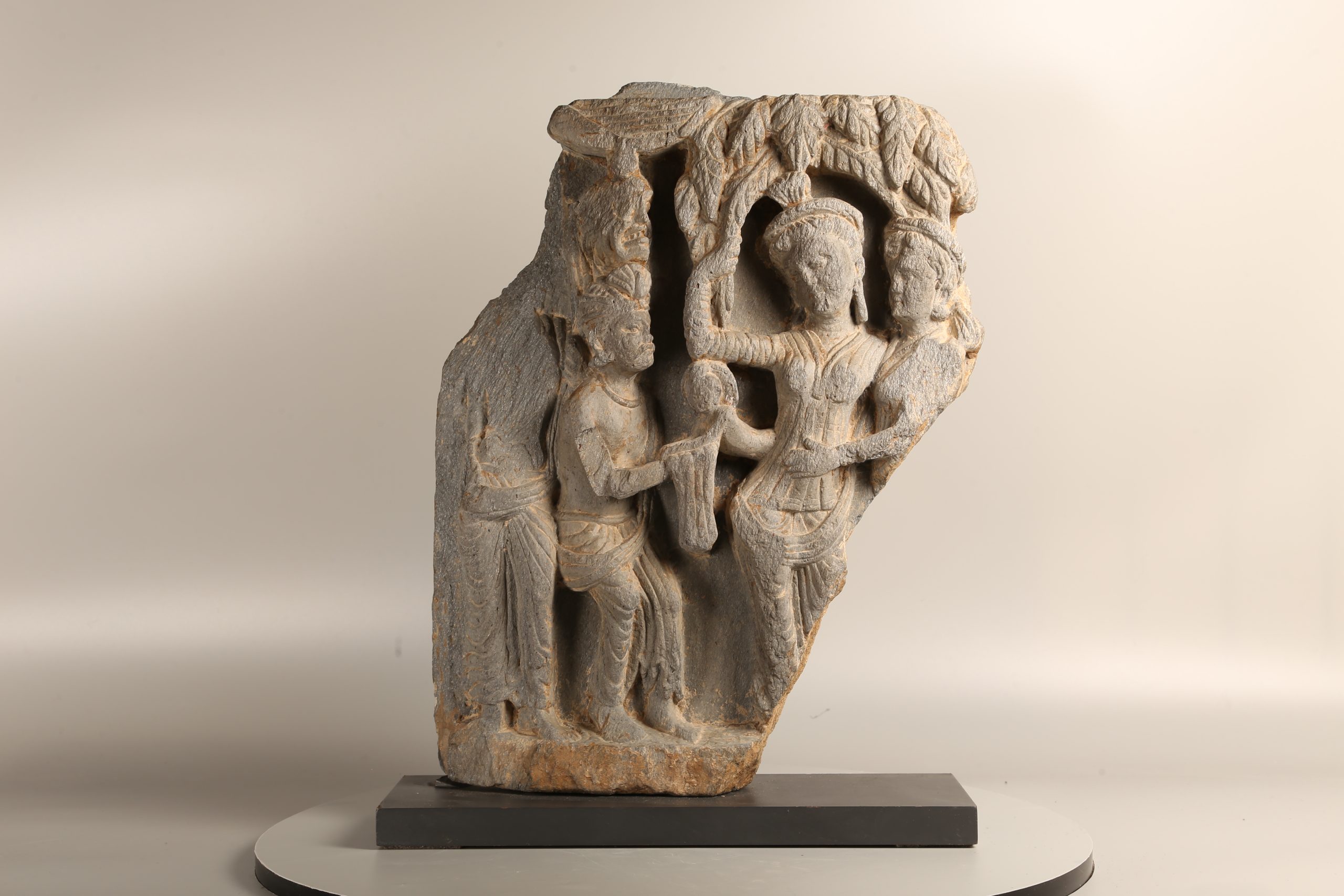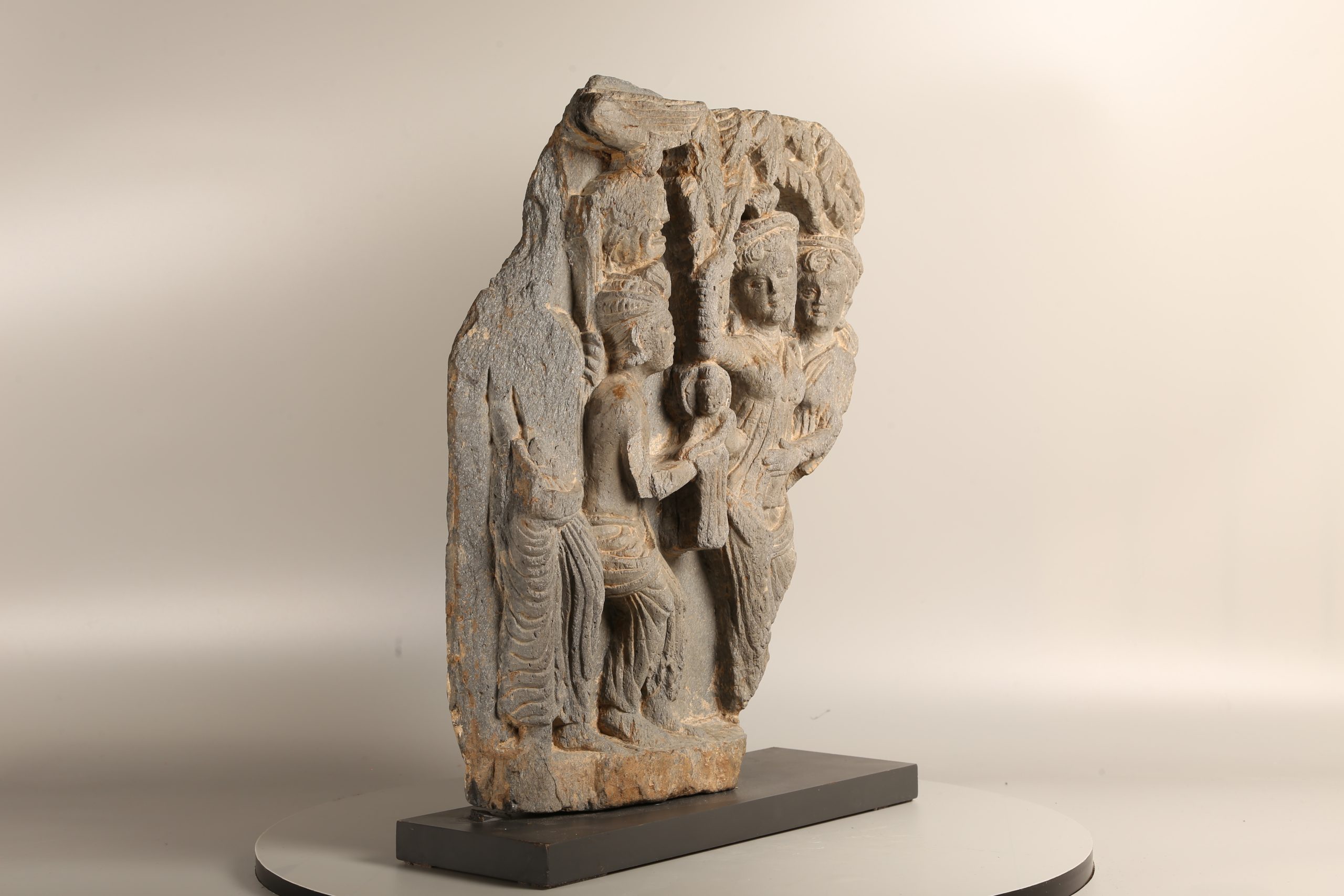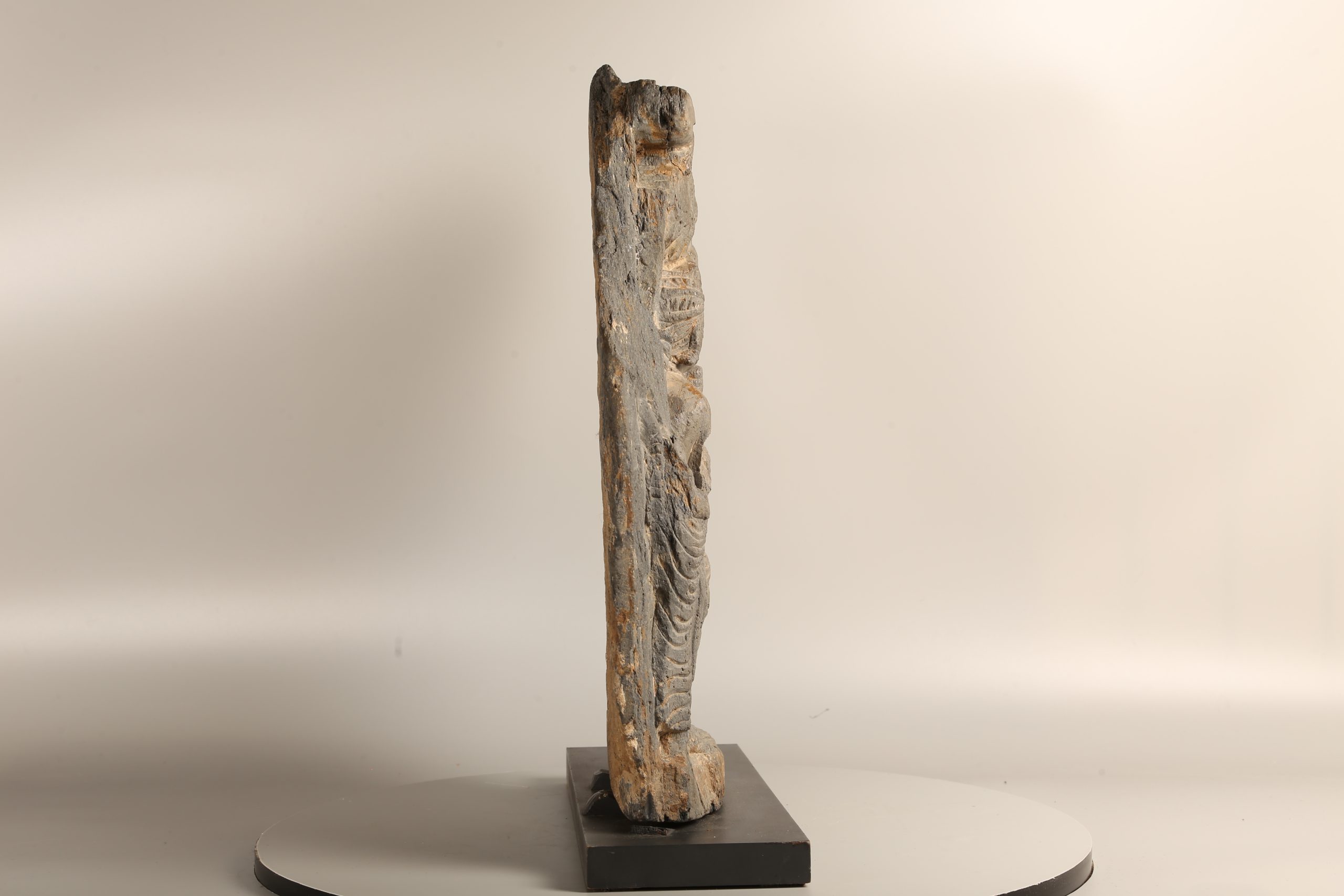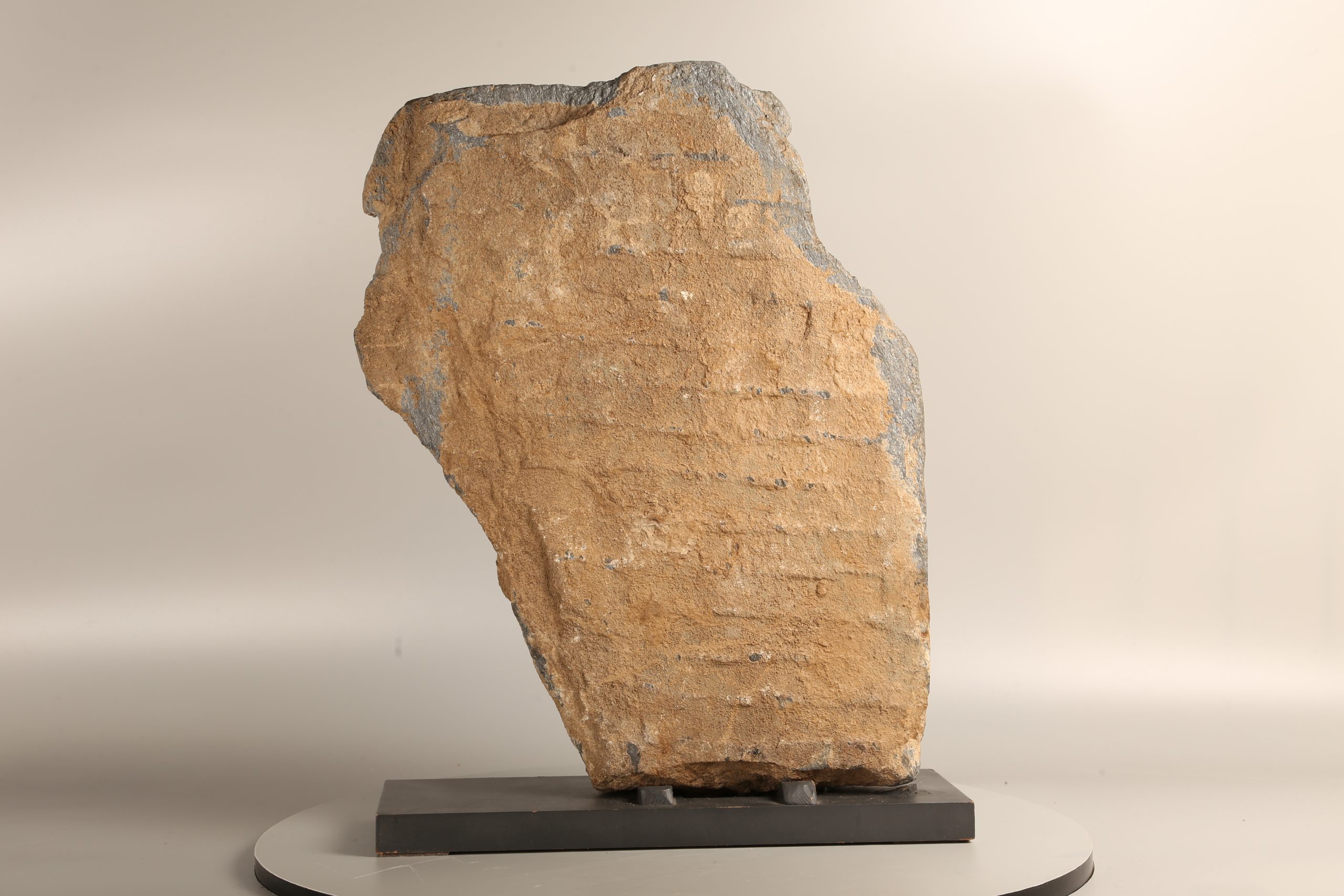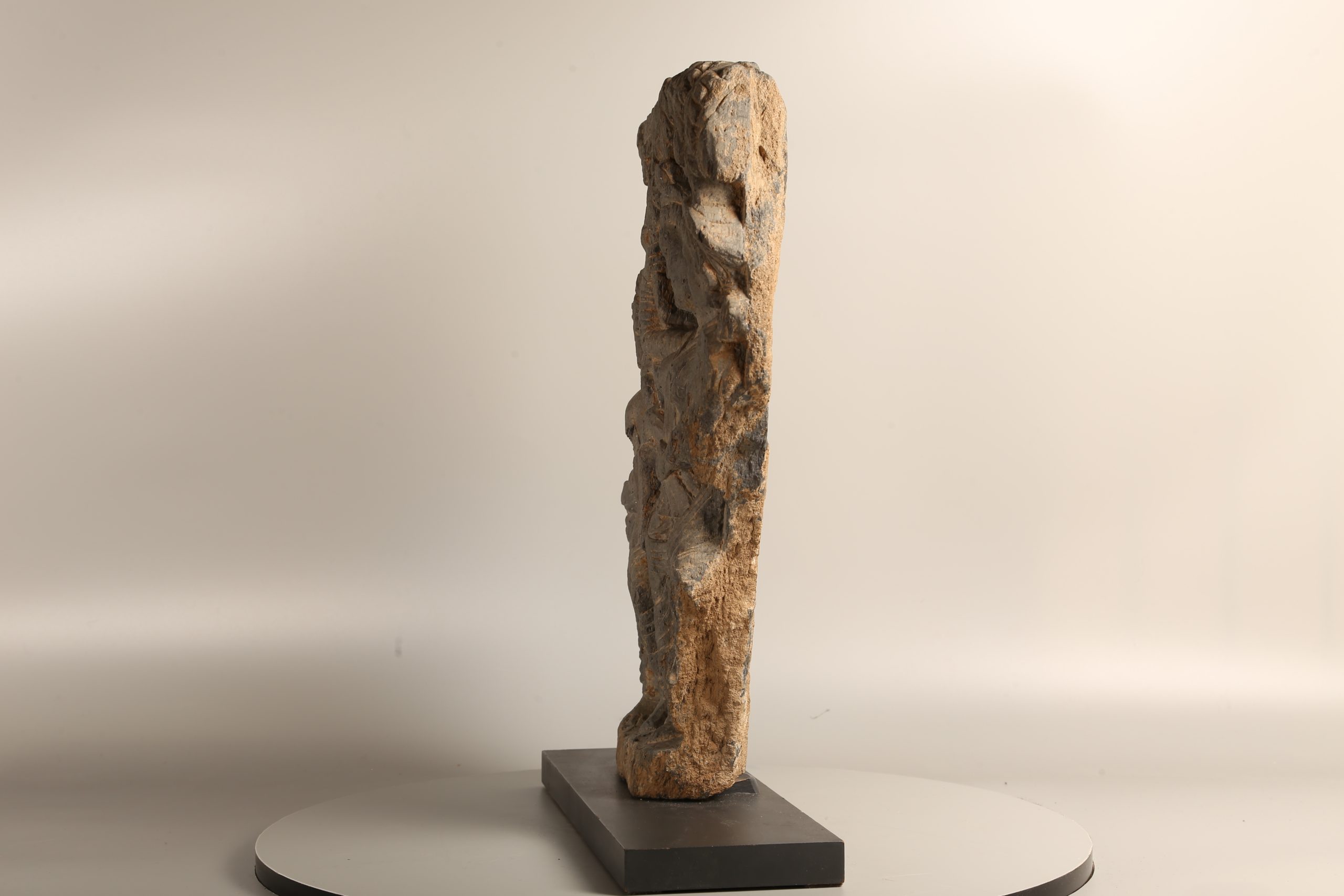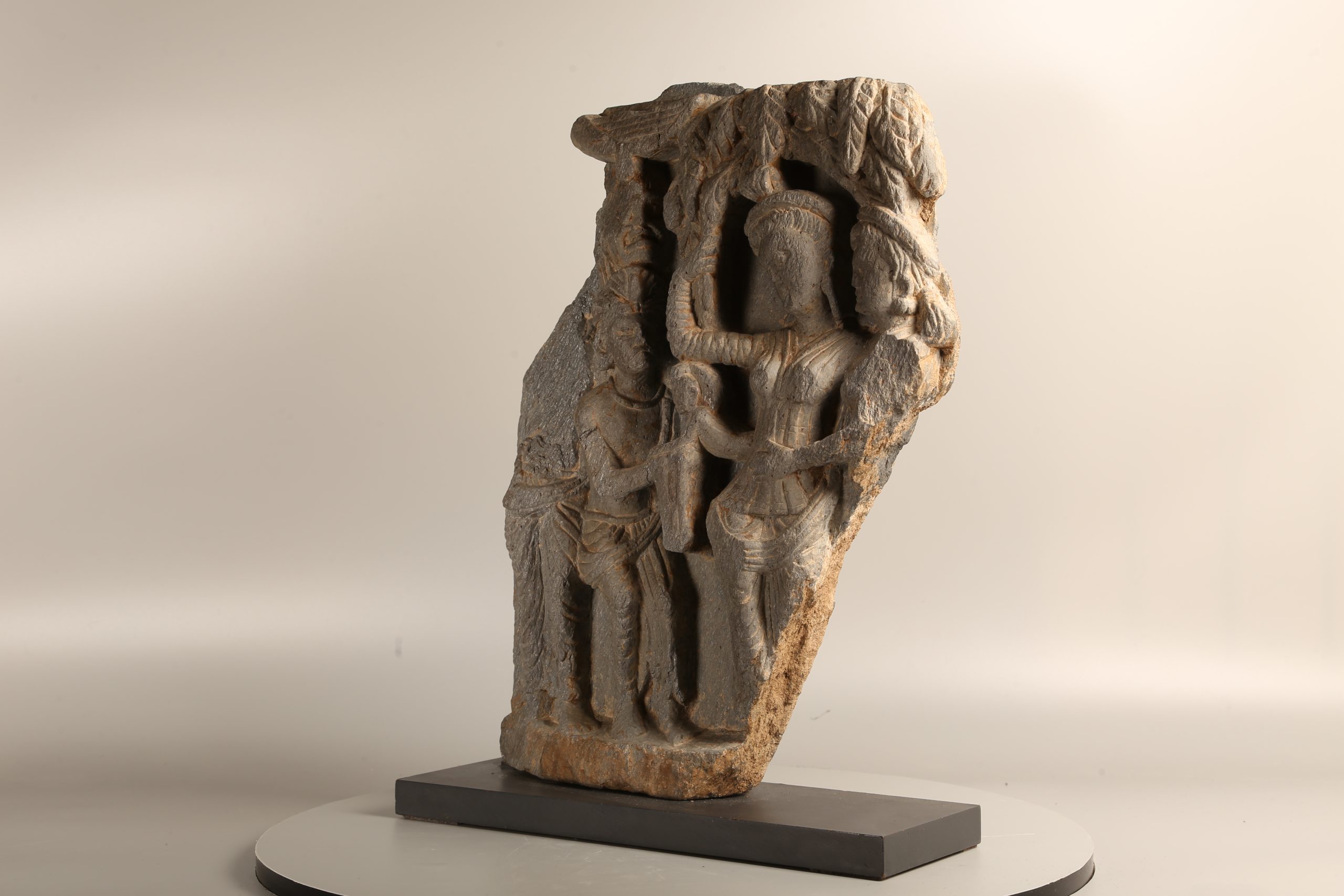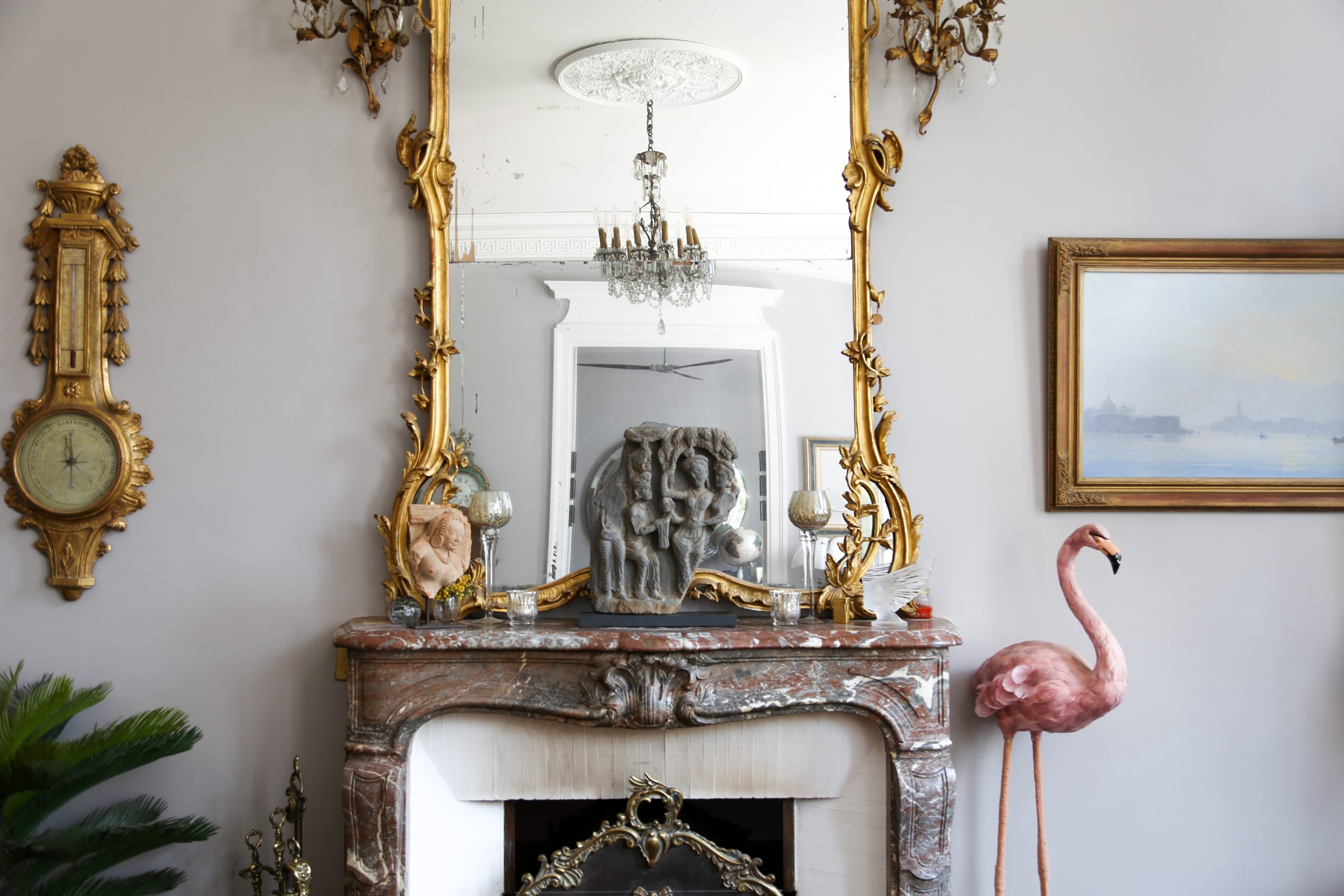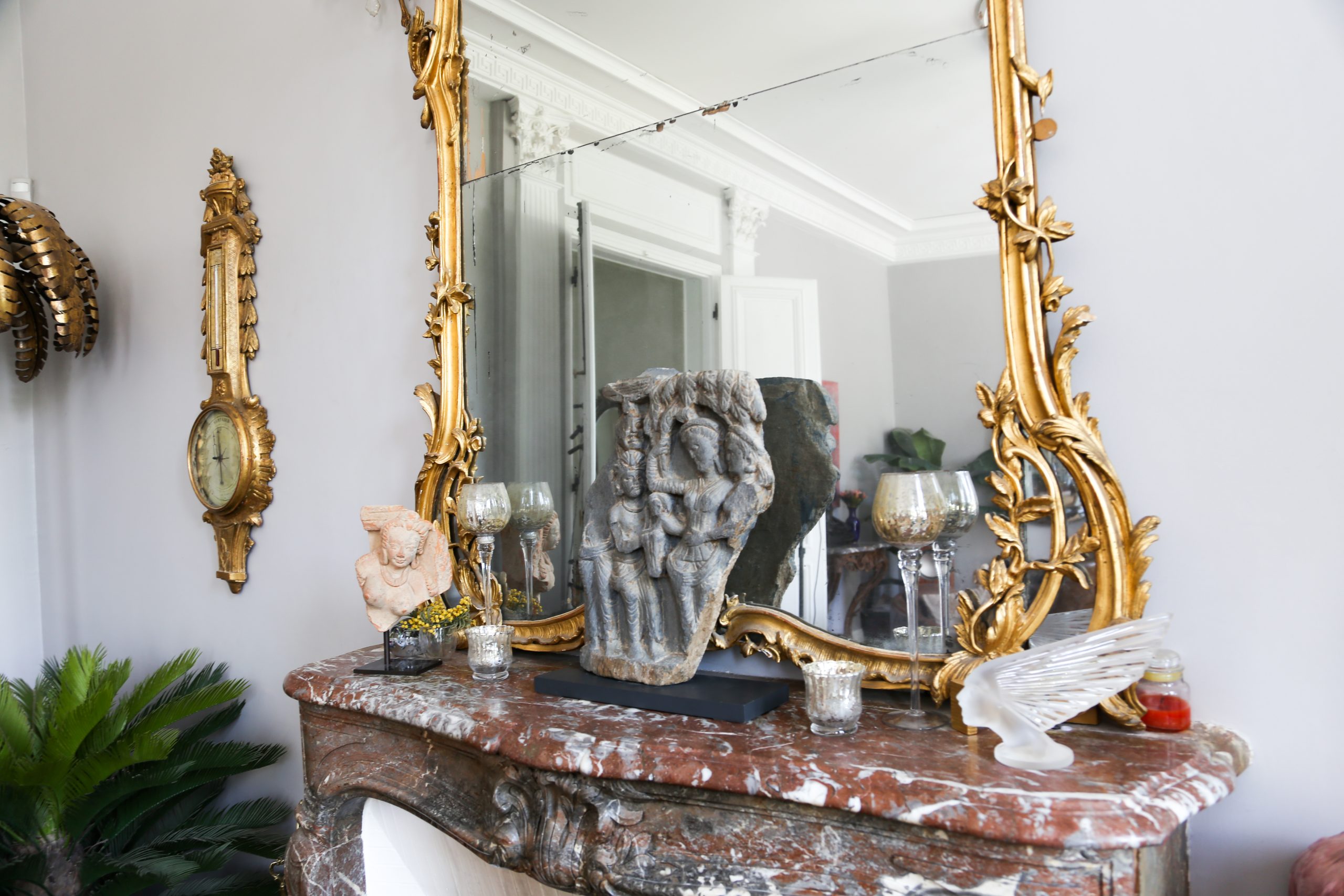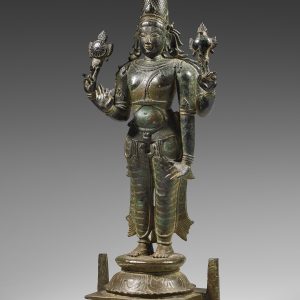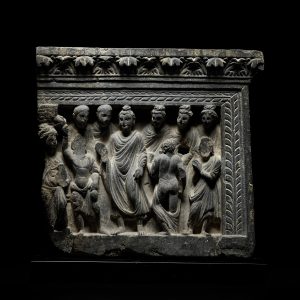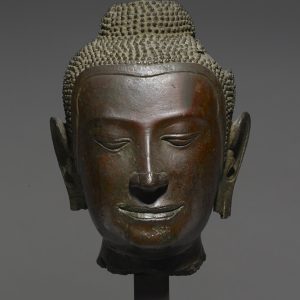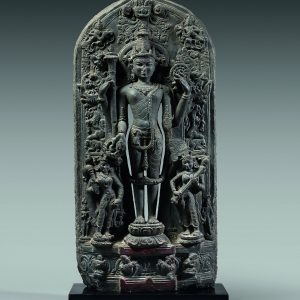Buddha Birth Relief
Schist
Ancient Gandhāra region
2nd-3rd century
H. 45 cm or 17,5 inch
360° view
Description
An essential scene in the life of Buddha Śākyamuni: his birth
It was in the Gandhāra that the iconography of the Buddha in human form was gradually established. The Gandhāra school emphasizes the last existence of the historical Buddha, as well as his previous lives or jātaka. It developed a syncretic style, which can be seen here in the use of carefully sculpted drapery reminiscent of classical Hellenistic statuary. The scene depicted is easily identifiable: it is the birth of Buddha Śākyamuni, the historical Buddha. In keeping with classical iconography, it depicts Queen Māyā -the Buddha’s mother -in Lumbinī, grasping a branch of the śāl tree with her right hand. From her side is born the future Buddha, gathered in a cloth stretched by Indra. On the right, Mahāprajāpatī supports her sister, and gently touches her belly, as if to soothe her.
A characteristic syncretic art
The Hellenistic influence is remarkable here, particularly in the drapery and the modelling of the bodies. The features of the figures are finely incised, the attitudes graceful and dynamic. The hairstyles are worked into characteristically soft curls; the care taken with Indra’s hair, as well as the various ornaments of Māyā and her sister, is noteworthy. The śāl tree, the sacred tree, unfolds above the figures in delicately carved scrolls. Indian iconographic influences meet Greek stylization here, providing a syncretic whole characteristic of the Gandhāra region, all set in a lively and detailed ensemble.
The art of narrative in Gandhāra
It can be assumed that this relief was originally part of a frieze dedicated to the life of Buddha. It was usual to find such scenes in the monasteries of Gandhāra. The latter were composed of two types of spaces: courtyards accessible to devotees and cluttered with all sorts of ex-voto monuments, such as burial mounds (stūpa) and chapels, and beyond that an enclosure reserved for monks only. In the public areas, the bases of the stūpa, the door and window surrounds, the plinths and sometimes even the risers of the stairs bore numerous reliefs, juxtaposing decorative motifs and apologetic narrative scenes, of which this relief can be assumed to be a part.
Provenance: Franco Giubergia, Turin, 1999; then French private collection (by repute).

